1.
Introduction and main results
In this paper, we consider the following plate equation with Hardy-Hénon potential and polynomial nonlinearity:
where Ω⊂Rn is a bounded domain with smooth boundary ∂Ω, ν is the unit outer normal to the boundary ∂Ω at x, α∈(−∞,n) and σ∈R are constants, and
The initial value (u0,u1)∈H20(Ω)×L2(Ω). Here,
Plate equations have been investigated for many years due to their importance in some physical areas such as vibration and elasticity theories of solid mechanics. For instance, in the case when σ is identically zero, equation (1.1) becomes an equation with polynomial nonlinearity which arises in aeroelasticity modeling (see, for example, [14,15]), and the problem with (or without) damping, memory, time-delay etc. were studied extensively (see [17,21,25,26,27,33,34,37,40,55,44] and references therein for the topics on well-posedness, global existence, finite time blow-up, global attractor etc.).
The potential term |x|−α∗u is known in the literature as Hardy potential if α>0, while if α<0 it is known as Hénon potential. This type of potential is important in analyzing many aspects of physical phenomena with singular poles (at origin). For example, the Efimov states (the circumstances that the two-particle attraction is so weak that any two bosons can not form a pair, but the three bosons can be stable bound states): see e.g., [16]; effects on dipole-bound anions in polar molecules: see e.g., [4,7,28]; capture of matter by black holes (via near-horizon limits): see e.g., [9,19]; the motions of cold neutral atoms interacting with thin charged wires (falling in the singularity or scattering): see e.g., [5,12]; the renormalization group of limit cycle in nonrelativistic quantum mechanics: see e.g., [6,8]; and so on. The are a lot of studies of evolution equations with this type of potentials, see, for example, [1,2,3,45,32,50] for parabolic equation, [11,49,52,39] for wave equations, and [24,22,23,42,47,48,53] for Schrödinger equation. However, as far as we know, there seems little studies of fourth-order plate equation with Hardy-Hénon potentials.
Motivated by the previous studies, in this paper, we will consider a fourth-order plate equation with Hardy-Hénon potential and polynomial nonlinearity, i.e, problem (1.1). We mainly concern with the well-posedness, and the conditions on global existence and finite time blow-up. To state the main results of this paper, we first introduce some notations used in this paper:
● Let (X,‖⋅‖X) and (Y,‖⋅‖Y) be two Banach space such that X↪Y continuously. Then we denotes by CX→Y the optimal constant of the embedding, i.e.,
● The norm of the Lebesgue space Lp(Ω), 1≤p≤∞ is denoted by ‖⋅‖p. Especially, we denote ‖⋅‖2 by ‖⋅‖ for simplicity.
● The inner product of the Hilbert space L2(Ω) is denoted by (⋅,⋅).
● The norm of the Sobolev space H20(Ω) is denoted by ‖⋅‖H2 and
Definition 1.1. Assume α∈(−∞,n) and σ∈R. Let T>0, u0∈H20(Ω), and u1∈L2(Ω). By a weak solution to problem (1.1), we mean a function
such that u(0)=u0, ut(0)=u1, and
holds for any ϕ∈H20(Ω) and 0<t≤T.
The local-well posedness of solutions to problem (1.1) is the following theorem:
Theorem 1.2. Assume p satisfies (1.2), α∈(−∞,n) and σ∈R. Let (u0,u1)∈H20(Ω)×L2(Ω). Then there exists a positive constant T depending only on ‖u0‖H2+‖u1‖ such that problem (1.1) admits a weak solution
The solution u can be extended to a maximal weak solution in [0,Tmax) such that either
1. Tmax=∞, i.e., the problem admits a global weak solution; or
2. Tmax<∞, and
i.e., the solution blows up at a finite time Tmax.
Furthermore, then energy E(t) is conservative, i.e.,
where
and
Moreover, we have (ut,u)∈C1[0,Tmax), and
Here J:H20(Ω)→R is a functional defined by
and I:H20(Ω)→R is a functional defined by
Based on Theorem 1.2, we study the conditions on global existence and finite time blow-up. The first result is about the case that the initial energy is non-positive.
Theorem 1.3. Assume p satisfies (1.2), α∈(−∞,n) and σ∈R. Let (u0,u1)∈H20(Ω)×L2(Ω) satisfy
1. E(0)<0; or
2. E(0)=0 and (u0,u1)>0.
Then the weak solution got in Theorem 1.2 blows up in finite time, i.e., Tmax<∞. Moreover, Tmax satisfies the following estimates:
1. If |σ|≤σ∗, then
where
2. If |σ|>σ∗ and (u0,u1)≥0, then
Here,
and
where
Remark 1. There are two remarks on the above theorem.
1. Firstly, by Lemma 2.2, if α∈(−∞,n), σ∗ is well-defined and
where CH20→L1 is the optimal constant of the embedding H20(Ω)↪L1(Ω), CH20→L2n2n−α is the optimal constant of the embedding H20(Ω)↪L2n2n−α(Ω). So Theorem 1.3 makes sense.
2. Secondly, for |σ|>σ∗ and (u0,u1)<0. Due to technique reasons, we only show the solution will blow up in finite time, but the upper bound of the blow-up time Tmax is not given. We left the study of this problem as an open question.
Theorem 1.3 is above the case E(0)≤0. In order to derive some results for the case E(0)>0, we use the potential well method (see, for example, [10,20,35,36,41,43,51]). Let
where J is the functional defined by (1.9), and N is the Nehari manifold defined as
Here I is the functional defined by (1.10).
Remark 2. If we assume p satisfies (1.2), α∈(−∞,n), and σ∈(−σ∗,σ∗), where σ∗ is the positive constant defined by (1.11), by Lemma 2.4, d is a positive constant and
where CH20→Lp is the optimal constant of the embedding H20(Ω)↪Lp(Ω).
Theorem 1.4. (Global existence for 0<E(0)≤d). Assume p satisfies (1.2), α∈(−∞,n), and σ∈(−σ∗,σ∗), where σ∗ is the positive constant defined by (1.11). Let u be the weak solution got in Theorem 1.2 with (u0,u1)∈H20(Ω)×L2(Ω) satisfying I(u0)>0 and 0<E(0)≤d, where E(0),I,d are defined in (1.7), (1.10), (1.13) respectively. Then u exists globally, i.e., Tmax=∞.
Theorem 1.5. (Blow-up for 0<E(0)≤d) Assume p satisfies (1.2), α∈(−∞,n), and σ∈(−σ∗,σ∗), where σ∗ is the positive constant defined by (1.11). Let u be the weak solution got in Theorem 1.2 with (u0,u1)∈H20(Ω)×L2(Ω) satisfying
1. E(0)<d,I(u0)<0; or
2. E(0)=d,I(u0)<0,(u0,u1)>0,
where E(0),I,d are defined in (1.7), (1.10), (1.13) respectively. Then u blows up in finite time, i.e., Tmax<∞. Moreover, Tmax satisfies the following estimates:
where
The organization of the rest of this paper is as follows: In Section 2, we give some preliminaries, which will be used in this paper; In Section 3, we study the well-posed of solutions by semigroup theory and prove Theorem 1.2; In Section 4, we study the conditions on global existence and finite time blow-up and prove Theorems 1.3, 1.4 and 1.5.
2.
Preliminaries
The following well-known Hardy-Littlewood-Sobolev inequality can be found in [31]:
Lemma 2.1. Let q,r>1 and 0<θ<n with
Let u∈Lq(Rn) and v∈Lr(Rn). Then there exists a sharp positive constant C depending only on n,α and q such that
If
then
If u∈Lq(Ω) and v∈Lr(Ω) with q and r satisfying the assumptions, by valuing them 0 in Rn∖Ω, it also holds
Lemma 2.2. Let α∈(−∞,n) and σ∗ be the constant defined in (1.11). Then σ∗ is well-defined and
where CH20→L1 is the optimal constant of the embedding H20(Ω)↪L1(Ω), CH20→L2n2n−α is the optimal constant of the embedding H20(Ω)↪L2n2n−α(Ω), κ is the constant given in (2.15) with θ=n−α, and
Proof. If α∈(−∞,0]_, we have,
If α∈(0,n)_, by Hardy-Littlewood-Sobolev inequality (see (2.16) of Lemma 2.1) with q=r=2n2n−α and H20(Ω)↪L2n2n−α(Ω) with constant CH20→L2n2n−α,
Lemma 2.3. [29,30] Suppose F(t)∈C2[0,T) is a nonnegative function satisfying
where 0<T≤+∞ and r is a positive constant. If F(0)>0 and F′(0)>0, then
and F(t)→+∞ as t→T.
Lemma 2.4. Assume p satisfies (1.2), α∈(−∞,n), and σ∈(−σ∗,σ∗), where σ∗ is the positive constant defined by (1.11). Let d be the constant defined in (1.13). Then we have
and
where CH20→Lp is the optimal constant of the embedding H20(Ω)↪Lp(Ω).
Proof. Firstly, we prove (2.19). For any ϕ∈H20(Ω)∖{0}, since σ∈[0,σ∗), by means of a simple calculation, we find there exists a unique positive constant ˆλ defined by
such that
Then,
On the other hand, for any ϕ∈N, we have ˆλ=1. Then
Then (2.19) follows from the above two inequalities.
Secondly, we prove (2.20), by (1.11), we have
Lemma 2.5. Assume p satisfies (1.2), α∈(−∞,n), and σ∈(−σ∗,σ∗), where σ∗ is the positive constant defined by (1.11). Let
where d is the positive constant defined in (1.13). Then
and
where CH20→Lp is the optimal constant of the embedding H20(Ω)↪Lp(Ω). Moreover, W=W1, and V1=V, where
and
Here,
Proof. Step 1. We prove (2.26). By the definition of J and I (see (1.9) and (1.10)), we have
For any ϕ∈W, since I(ϕ)>0 and J(ϕ)<d, (2.26) follows from the above inequality.
Step 2. We prove (2.27). For any ϕ∈V, by the definition of I in (1.10), |σ|<σ∗, it follows from (1.11) and I(ϕ)<0 that
which implies (2.27).
Step 3. We show that V1=V.
Firstly, for any ϕ∈V1, by (1.9) and the definition of V1, we get
which implies
Thus, by the definition of I in (1.10) and the above two inequalities,
which, together with J(ϕ)<d, implies ϕ⊂V, then V1⊂V.
Secondly, we prove V⊂V1. For any ϕ∈V, since |σ|<σ∗, it follow from (2.27) and (2.31) that
Then, in view of I(ϕ)<0, i.e.,
we get
which, together with the second line of (2.23), implies
Since J(ϕ)<d, the above inequality infers that ϕ∈V1, and then \mathcal{V}\subset \mathcal{V}_1 .
Step 4. We show that \mathcal{W} = \mathcal{W}_1 .
Firstly we prove \mathcal{W}\subset\mathcal{W}_1 . In fact, for any \phi\in \mathcal{W} , if \phi = 0 , it is obvious that \phi\in \mathcal{W}_1 ; if \phi \neq0 , in view of the definition of \mathcal{W} , we get
The above two inequalities imply
which, together with J(u)<d , implies \phi\in \mathcal{W}_1 , then \mathcal{W}\subset \mathcal{W}_1 .
Secondly we prove \mathcal{W}_1\subset\mathcal{W} by contradiction argument. If there exists \phi\in \mathcal{W}_1\setminus \mathcal{W} . Then we have
If I(\phi)<0 , the by (2.32), we get \phi\in \mathcal{V} (see (2.25)), and then \phi\in \mathcal{V}_1 (since \mathcal{V} = \mathcal{V}_1 has been proved in Step 3), which, together with (2.29), contradicts (2.33); If I(\phi) = 0 , then by \phi\neq0 , we get \phi\in \mathcal{N} (see (1.14)), and then J(\phi)\geq d (see (1.13)), which contradicts (2.32). So, \phi\in \mathcal{W} , and then \mathcal{W}_1\subset \mathcal{W} .
Lemma 2.6. Assume p satisfies (1.2), \alpha\in(-\infty, n) , and \sigma\in(-\sigma^*, \sigma^*) , where \sigma^* is the positive constant defined by (1.11). Let
be the maximal weak solution to (1.1) with initial value (u_0, u_1)\in H_0^2( \Omega)\times L^2( \Omega) got in Theorem 1.2.
1. If there exists a t_0\in [0, T_{\max}) such that E(t_0)<d , then u(t)\in \mathcal{W} for t\in[t_0, {T_{\max}}) provided that u(t_0) \in \mathcal{W} ;
2. If there exists a t_0\in [0, T_{\max}) such that either E(t_0)<d or E(t_0) = d and (u_t, u)_{t = t_0}\geq 0 , then u(t)\in \mathcal{V} for t\in[t_0, {T_{\max}}) provided that u(t_0) \in \mathcal{V} ,
where E(t) is the energy functional defined in (1.6), \mathcal{W} and \mathcal{V} is is the sets defined in (2.24) and (2.25) respectively, d constant defined in (1.13).
Proof. Firstly, we proof the first part by contradiction argument. Actually, if the conclusion is incorrect, by using u\in C \left([0, {T_{\max}});H_0^2( \Omega) \right)\cap C^1 \left([0, {T_{\max}});L^2( \Omega) \right) and u(t_0)\in \mathcal{W} , there must exist a t_1\in(t_0, {T_{\max}}) such that
Since the energy is conservative (see (1.5)), E(t) = \frac{1}{2}\left\| u_t\right\|^{2}+J(u)(t) (see (1.6)), and E(0)<d , we get
Then by u(t_1)\in \partial \mathcal{W} and the definition of \mathcal{W} (see (2.24)), it follows I(u)(t_1) = 0 and u(t_1)\neq0 . So u(t_1)\in \mathcal{N} (see the definition of \mathcal{N} in (1.14)), then by the definition of d (see (1.13)), it follows J(u)(t_1)\geq d , which contradicts (2.35).
Secondly, we proof the second part. In the case E\left(t_{0}\right)<d , in view of (2.27), the proof is similar to the first part. We only prove the case
in detail. Arguing by contradiction, if the conclusion is incorrect, by u\left(t_{0}\right) \in \mathcal{V} and u \in C\left(\left[0, T_{\max }\right) ; H_{0}^{2}\right), we obtain that there must exist a t_{1} \in\left(t_{0}, T_{\max }\right) such that u(\cdot, t) \in \mathcal{V} , t \in\left[t_{0}, t_{1}\right) and u(t_1)\in \partial \mathcal{V} , i.e. (see (2.25)),
(i) : J\left(u\right)\left(t_{1}\right)<d, I\left(u\right)\left(t_{1}\right) = 0 ; or
(ii): J\left(u\right)\left(t_{1}\right) = d, I\left(u\right)\left(t_{1}\right) \leq 0 .
Due to u(t) \in \mathcal{V} for any t \in\left[t_{0}, t_{1}\right) and u \in C\left(\left[0, T_{\max }\right) ; H_0 ^{2}\right) , by (2.27), we get
If (i) is true, by using I\left(u\left(t_{1}\right)\right) = 0 and (2.36), we have u\left(t_{1}\right) \in \mathcal{N} (see (1.14)), which implies J\left(u\right)\left(t_{1}\right) \geq d (see (1.13)), a contradiction.
If (ii) is true, by (1.5) and E(t) = \frac{1}{2}\left\|u_t\right\|^{2}+J(u)(t) (see (1.6)), we get
Combining (2.37) and J\left(u\right)\left(t_{1}\right) = d, we have
Utilizing Cauchy-Schwartz's inequality, we obtain that
Integrating (1.8) over [0, t] , we obtain
By (2.40), we get
Then,
Since I(u)(t)<0 (by using u(t)\in \mathcal{V} for t\in [t_0, t_1) ) and (u_t, u)|_{t = t_0}\geq0 , we get from the above equality that
which contradicts (2.39).
3.
Local-well posedness
In this section, we study local well-posedness of solutions to (1.1) by semigroup theory. To this end, first, we introduce some fundamental theory on semigroup theory.
Suppose that H is a Hilbert space with inner product (\cdot, \cdot)_H and norm
Suppose F is a nonlinear operator from H into H . F is said to satisfy the local Lipschitz condition if for any positive constant M>0 , there is a positive constant L_M depending only on M such that when U, V\in H , \|U\|_H\leq M and \|V\|_H\leq M ,
Consider the following abstract semilinear evolution equation
where A:D(A)\rightarrow H is a densely defined linear operator on H , i.e., A is linear and D(A) is dense in H , where D(A) = \{\Phi\in H: A\Phi\in H\} .
First, we introduce the Lumer-Phillips theorem (see, for example, [38,Theorem 1.2.3] and [54,Lemma 2.2.3]):
Lemma 3.1. The necessary and sufficient conditions for A generating a contraction C_0 -semigroup \{e^{tA}\}_{t\geq0} on H are
1. (A\Phi, \Phi)_H\leq0 for all \Phi\in D(A) , and
2. R(I-A) = H .
Here R(I+A) = \{\Phi+A\Phi:\Phi\in D(A)\} is the range of the operator.
Next, we introduce the local well-posedness results for (3.42), which can be found in [54,Theorems 2.5.4 and 2.5.5]:
Lemma 3.2. Suppose that A generates a contraction C_0 -semigroup \{e^{tA}\}_{t\geq0} on H , and F is a nonlinear operator from H into H satisfying the local Lipschitz condition. Then for any U_0\in H , there is a positive constant T depending only on \|U_0\|_H such that problem (3.42) admits a unique local mild solution U(t) , i.e., U\in C([0, T], H) and satisfies
The solution U can be extended to a maximal mild solution in [0, {T_{\max}}) such that either
1. {T_{\max}} = \infty , i.e., the problem admits a global mild solution; or
2. {T_{\max}}<\infty , and
i.e., the solution blows up at a finite time {T_{\max}} .
Furthermore, if u_0\in D(A) , then u\in C \left([0, {T_{\max}});D(A) \right)\cap C^1 \left([0, {T_{\max}});H \right) is classical solution.
By introduction U = (u, v): = (u, u_t) , U_0 = (u_0, u_1) , and
where I is the identity operator, (1.1) can be equivalently written as the following system
In the next lemma, we show A generates a contraction semigroup \{e^{tA}\}_{t\geq0} on H_0^2( \Omega)\times L^2( \Omega) .
Lemma 3.3. Let A be the operator defined in (3.44). Then A generates a contraction semigroup \{e^{tA}\}_{t\geq0} on H_0^2( \Omega)\times L^2( \Omega) .
Proof. Let H: = H_0 ^2( \Omega)\times L^2( \Omega) , then H is a Hilbert space with inner produce (\cdot, \cdot)_H defined as
where \Psi = (\varphi_1, \varphi_2), \; \Psi = (\psi_1, \psi_2)\in H . Then
Let A be the linear operator defined in (3.44), then
Next we show A generates a C_0 -semigroup on H by using Lemma 3.1. It is obvious D(A) is dense in H , and for any \Phi = (\varphi_1, \varphi_2)\in D(A) , we have
Next we show R(I-A) = H . Fixed any f = (f_1, f_2)\in H , since f_1+f_2\in L^2( \Omega) , by standard theory of elliptic equation, the following problem
admits a unique solution u\in H^4( \Omega)\cap H_0^2( \Omega) . Let v = u-f_1\in H_0^2( \Omega) . Then U = (u, v) satisfies
which implies R(I-A) = H . Then by Lemma 3.1, A generates a contraction C_0 -semigroup on H .
Next, we show (3.45) admits a mild solution.
Lemma 3.4. Assume \alpha\in(-\infty, n) and \sigma\geq0 . Let H be the Hilbert space defined in Lemma 3.3, and U_0 = (u_0, u_1)\in H = H_0^2( \Omega)\times L^2( \Omega) . Then there exists a positive constant T depending only on \|U_0\|_H = \|u_0\|_{H^2}+\|u_1\| such that problem (3.45) admits a unique mild solution U(t) , i.e., U = (u, u_t)\in C \left([0, T]; H \right) and satisfies
The solution U can be extended to a maximal weak solution in [0, {T_{\max}}) such that either
1. {T_{\max}} = \infty , i.e., the problem admits a global mild solution; or
2. {T_{\max}}<\infty , and
i.e., the solution blows up at a finite time {T_{\max}} .
Furthermore, it holds
Proof. Let F be the nonlinear function defined in (3.44). In view of Lemmas 3.2 and 3.3, to prove local existence, uniqueness, and extension of mild solutions, we only need to show F:H\rightarrow H satisfying the local Lipschitz condition.
\underline{\text{First,we}\ \text{show}\ F(H)\subset H}. For any U = (u, v)\in H , by (3.44), to prove F(U)\in H , we only need to prove,
Since H_0^2( \Omega)\hookrightarrow L^{2(p-1)}( \Omega) (see (1.2)), it is obvious |u|^{p-2}u\in L^2( \Omega) .
Next we show \left|x\right|^{-\alpha}* u\in L^2( \Omega) . According the range of \alpha , we divide the proof into two cases: \alpha\leq 0 and \alpha\in(0, n) .
Case 1. \alpha\leq 0 . Since \Omega is bound, we have
Then, by Hölder's inequality,
Case 2. 0< \alpha<n . Since \alpha<n , it follows \frac{2n}{2n- \alpha}<2 . For any \phi\in L^2( \Omega) , there exists a positive C_ \Omega depending only on \Omega such that \|\phi\|_{\frac{2n}{2n- \alpha}}\leq C_ \Omega\|\phi\| . Since
by using (2.16) with q = r = \frac{2n}{2n- \alpha} , \theta = n- \alpha , we get
Then we get
So (3.51) is true.
\underline{\text{Next}\ \text{we}\ \text{show}\ F\ \text{is}\ \text{locally}\ \text{Lipschitz}\ \text{continuous}}. Let U_1 = (u_1, v_1)\in H and U_2 = (u_2, v_2)\in H be such that
where M is a positive constant. Let
Then, by (3.52) and (3.53),
Case 1. n = 1, 2, 3, 4 . Since H_0^2( \Omega)\hookrightarrow L^\infty( \Omega) with optimal constant C_{H_0^2 \rightarrow L^\infty} , in view of (3.54), we have
Case 2. n\geq 5 . Since H_0^2( \Omega)\hookrightarrow L^\frac{2n}{n-4} ( \Omega) with optimal constant C_{H_0^2 \rightarrow L^\frac{2n}{n-4}} and H_0^2( \Omega)\hookrightarrow L^\frac{n(p-2)}{2}( \Omega) with optimal constant C_{H_0^2 \rightarrow L^\frac{n(p-2)}{2}} , in view of (3.54), we have
In view of the above three inequalities, we get F is locally Lipschitz continuous. Then the local existence and extension of mild solutions follows.
Next we prove (3.50). Suppose firstly U_0\in D(A) = (H^4( \Omega) \cap H_0 ^2( \Omega))\times H_0 ^2( \Omega) , then by Lemma 3.2, U\in C \left([0, {T_{\max}});D(A) \right)\cap C^1 \left([0, {T_{\max}});H \right) is a classical solution. Then it follows from (3.45) and (3.47) that
For fixed t\in[0, {T_{\max}}) , integrating the above equality over [0, t] , we get (3.50).
In general case U_0\in H , since D(A) is dense in H , we approximate U_0 by a sequence \{U_{n0}\}_{n = 1}^\infty , and then we pass to the limit to obtain (3.50).
Proof of Theorem 1.2. Step 1. Existence of maximal weak solution. By Lemma 3.4 and Definition 1.1, to show the existence of maximal weak solution, we only need to prove the mild solution U = (u, u_t) got in Lemma 3.4 satisfies (1.4).
We denote the inner produce of the Hilbert space L^2( \Omega)\times L^2( \Omega) by \left(\left(\cdot, \cdot \right)\right) , i.e.,
Since C_0^\infty( \Omega) is dense in H_0^2( \Omega) , by density arguments, we only need to prove (1.4) with \phi\in C_0^\infty( \Omega) . Let U(t) = (u, u_t)\in C \left([0, {T_{\max}}); H_0^2( \Omega)\times L^2( \Omega) \right) be the mild solution of (3.45) got in Lemma 3.4 and \Phi = (0, \phi) . For fixed t\in[0, {T_{\max}}) , by using (3.49), we get
We differentiate to obtain
Now, using the standard properties of the semigroup (see for example, [54,Chapter 2]), we obtain
where
is the adjoint operator of A ; and
Then it follows from (3.55)-(3.57) and (3.49) that
Since U = (u, u_t) and \Phi = (0, \phi) , we have
Then it follows from (3.58) that
Since u\in C \left([0, {T_{\max}}); H_0^2( \Omega) \right) , integrating by parts, we get
Note \phi_t = 0 , integrating in time over [0, t] for any t\in(0, {T_{\max}}) , we obtain (1.4).
Step 2. Proof of (u_t, u) in C^1[0, {T_{\max}}) and the equality (1.8). Since
by taking \phi = u(t) in (3.59), we get
i.e, (u_t, u) in C^1[0, {T_{\max}}) and (1.8) holds.
Step 3. Proof of the equality (1.5). The energy identity (1.5) follows from (3.50) directly. In fact by using U = (u, u_t) , (3.44), and (3.46), we have
Then by (3.50), we get (1.5).
4.
Global existence and finite time blow-up
Proof of Theorem 1.3. Let u\in C \left([0, {T_{\max}});H_0^2( \Omega) \right)\cap C^1 \left([0, {T_{\max}});L^2( \Omega) \right) be the maximal weak solution got in Theorem 1.2. By E(0)\leq0 and (1.5), it holds,
By the definitions of J and I (see (1.9) and (1.10)), we get
By (1.5) and (1.6), it follows J(u) = E(0)-\frac{1}{2}\|u_t\|^2 . Then, by the above two inequalities, we get
and
By (1.11), we get
In the following we divide the proof into two cases: |\sigma|\leq\sigma^* and |\sigma|>\sigma^* .
Case 1. |\sigma|\leq\sigma^* . It follows from (4.61) and (4.62) that
Let
where \beta\geq0 and \gamma\geq0 are two constants to be determined later. Then by using (1.8) and (4.63), we have
By Cauchy-Schwartz's inequality,
Then by (4.66) and (4.67), it follows
Subcase 1. E(0)\leq 0 and (u_0, u_1)>0 . We take \beta = \gamma = 0 , then h(0) = \|u_0\|^2>0 and h'(0) = 2(u_0, u_1)>0 . Then, it follows from Lemma 2.3 that h blows up at a finite time \hat T , \hat T\geq {T_{\max}} (by Theorem 1.2), and
Subcase 2. E(0)<0 and (u_0, u_1) = 0 . We take
then h(0) = \|u_0\|^2+ \beta\gamma^2 = 2\|u_0\|^2>0 , h'(0) = 2 \beta\gamma = 2\sqrt{-2E(0)}\|u_0\|>0 . Then, it follows from Lemma 2.3 that h blows up at a finite time \hat T , \hat T\geq {T_{\max}} (by Theorem 1.2), and
Subcase 3. E(0)<0 and (u_0, u_1)<0 . We take
then,
Then, it follows from Lemma 2.3 that h blows up at a finite time \hat T , \hat T\geq {T_{\max}} (by Theorem 1.2), and
Case 2. |\sigma|>\sigma^* . Firstly we estimate \int_ \Omega\int_ \Omega|x-y|^{- \alpha}u(x, t)u(y, t)dxdy .
\underline{\text{If}\ \alpha \le 0}, let R = \sup_{x, y\in \Omega}|x-y| , then by Hölder's inequality, we get
\underline{\text{If }0<\alpha <n}, since
and \frac{2n}{2n- \alpha}<p , by using (2.16) with q = r = \frac{2n}{2n- \alpha} , \theta = n- \alpha and Hölder's inequality, we get
where \kappa is the positive constant defined in (2.15).
Let
By (4.69) and (4.70), we get
Subcase 1. E(0)<0 and (u_0, u_1)\geq0 ; or E(0) = 0 and (u_0, u_1)>0 . By (1.8), (4.60), and E(0)\leq 0 , we get
Then
and then \|u\|\geq\|u_0\| . Then it follows from the Hölder's inequality that
which, together with (4.71) implies
In view of (1.11), (4.61) and (4.72), we obtain
where
It follows (\frac{\Lambda}{2}\times(4.60)+\frac{1}{p}\times(4.73))\times\frac{2p}{p\Lambda+2} that
Let h be the function defined in (4.64). Then by using (1.8) and (4.75), we have
and
Then it follows from (4.67) that
\underline{\text{If}\ E(0)\le 0\ \text{and}\ \left( {{u}_{0}},{{u}_{1}} \right)>0} , we take \beta = \gamma = 0 , then h(0) = \|u_0\|^2>0 and h'(0) = 2(u_0, u_1)>0 . Then, it follows from Lemma 2.3 that h blows up at a finite time \hat T , \hat T\geq {T_{\max}} (by Theorem 1.2), and
\underline{\text{If }E(0)<0\ \text{and}\ \left( {{u}_{0}},{{u}_{1}} \right)=0}, we take
then h(0) = \|u_0\|^2+ \beta\gamma^2 = 2\|u_0\|^2>0 , h'(0) = 2 \beta\gamma = 2\sqrt{-2E(0)}\|u_0\|>0 . Then, it follows from Lemma 2.3 that h blows up at a finite time \hat T , \hat T\geq {T_{\max}} (by Theorem 1.2), and
Subcase 2. E(0)<0 and (u_0, u_1)<0 . We prove u blows up by contradiction argument. Assume u exists globally, i.e., {T_{\max}} = \infty .
By (4.60), -I(u)(t)\geq-2E(0)>0 , t\in[0, \infty) . Then it follows (1.8),
Integrating this inequality from 0 to t we get
Let t_0 = \frac{(u_0, u_1)}{2E(0)} , then (u(t_0), u_t(t_0))\geq0 . Moreover, E(t_0) = E(0)<0 . We come back to subcase 1. Then \|u\| will become infinite in finite time, which contradicts {T_{\max}} = \infty .
Proof of Theorem 1.4. Let u\in C \left([0, {T_{\max}});H_0^2( \Omega) \right)\cap C^1 \left([0, {T_{\max}});L^2( \Omega) \right) be the weak solution got in Theorem 1.2 with (u_0, u_1)\in H_0^2( \Omega)\times L^2( \Omega) satisfying I(u_0)>0 and 0<E(0)\leq d .
Step 1. E(0)<d ; or E(0) = d and \|u_1\|>0 . By (1.7), J(u_0)<d . Since, we also have I(u_0)>0 , we get u_0\in \mathcal{W} (see (2.24) for the definition of \mathcal{W} ). Then, by Lemma 2.6, u(t)\in \mathcal{W} for all t\in[0, {T_{\max}}) . Since \mathcal{W} = \mathcal{W}_1 (see Lemma 2.5), it follows from the definition of \mathcal{W}_1 (see (2.28)) that
By (1.11), it follows
which, together with (4.79) and |\sigma|<\sigma^* , implies
Since E(t) = E(0) (see (1.5)), E(t) = \frac12\|u_t\|^2+J(u)(t) (see (1.6)), 2J(u)-I(u) = \frac{p-2}{p}\|u\|_p^p (see (2.30)), I(u)(t)>0 (since u(t)\in \mathcal{W} ) for all t\in[0, {T_{\max}}) , and E(0)\leq d , it holds
By (4.80), (4.81), and Theorem 1.2, we get {T_{\max}} = \infty .
Step 2. E(0) = d and \|u_1\| = 0 . Since E(t) = E(0) (see (1.5)), E(t) = \frac12\|u_t\|^2+J(u)(t) (see (1.6)) and E(0) = \frac{1}{2}\|u_1\|^2+J(u_0) (see (1.7)), we get
If J(u(t))\equiv d for all t\in[0, {T_{\max}}) , then by (1.6), \|u_t\|\equiv0 for t\in[0, {T_{\max}}) , then u(t)\equiv u_0 , so by Theorem 1.2, {T_{\max}} = \infty ; If there exists t_1\in[0, {T_{\max}}) such that J(u)(t_1)<d , we claim
● there exists a constant \sigma>0 sufficient small, and a sequence \{t_n\}_{n = 1}^\infty such that \sigma\geq t_n\downarrow0 as n\uparrow\infty and J(u)(t_n)<d for n = 1, 2, \cdots .
In fact, if the claim is not true, there must exists a constant \delta>0 such that J(u)(t) = d for t\in[0, \delta] . Then by analysis as the first case, u(t)\equiv u_0 for t\in[0, \delta] ; and then u(t)\equiv u_0 for t\in[\delta, 2\delta] , [2\delta, 3\delta] , etc. So u(t)\equiv u_0 for all t\in[0, {T_{\max}}) , then J(u)(t_1) = J(u_0) = d , a contradiction. So the claim is true, since I(u_0)>0 and I(u)(t)\in C[0, {T_{\max}}) , \lim_{n\uparrow\infty}I(u)(t_n) = I(u_0)>0 . So for n large enough, we have J(u)(t_n)<d and I(u)(t_n)>0 , we come back to step 1.
Proof of Theorem 1.5. Let u\in C \left([0, {T_{\max}});H_0^2( \Omega) \right)\cap C^1 \left([0, {T_{\max}});L^2( \Omega) \right) be the weak solution got in Theorem 1.2 with (u_0, u_1)\in H_0^2( \Omega)\times L^2( \Omega) .
If E(0)<d , by (1.7), we get J(u_0)<d ; If E(0) = d and (u_0, u_1)>0 , we must have \|u_1\|>0 , and by (1.7) again, we get J(u_0)<d . Now we prove \|u_1\|>0 by contradiction argument. In fact if \|u_1\| = 0 , by Cauchy-Schwartz's inequality, we have 0<(u_0, u_1)\leq\|u_0\|\|u_1\| = 0 , a contradiction.
Since J(u_0)<d and I(u_0)<0 , we get u_0\in \mathcal{V} (see (2.25)). Then by Lemma 2.6, u(t)\in \mathcal{V} for t\in[0, {T_{\max}}) , where \mathcal{V} is the set defined in (2.25). Since \mathcal{V} = \mathcal{V}_1 (see Lemma 2.5), by (2.29) and (4.61),
Let h(t) be the function defined in (4.64), with \beta\geq0 and \gamma\geq0 to be determined later. Then by using (1.8) and (4.82), we have
Then it follows from (4.67) that
Case 1. E(0)\leq d and (u_0, u_1)>0 . We take \beta = \gamma = 0 , then h(0) = \|u_0\|^2>0 and h'(0) = 2(u_0, u_1)>0 . Then, it follows from Lemma 2.3 that h blows up at a finite time \hat T , \hat T\geq {T_{\max}} (by Theorem 1.2), and
Case 2. E(0)<d and (u_0, u_1) = 0 . We take
then h(0) = \|u_0\|^2+ \beta\gamma^2 = 2\|u_0\|^2>0 , h'(0) = 2 \beta\gamma = 2\sqrt{2(d-E(0))}\|u_0\|>0 . Then, it follows from Lemma 2.3 that h blows up at a finite time \hat T , \hat T\geq {T_{\max}} (by Theorem 1.2), and
Case 3. E(0)<d and (u_0, u_1)<0 . We take
then,
Then, it follows from Lemma 2.3 that h blows up at a finite time \hat T , \hat T\geq {T_{\max}} (by Theorem 1.2), and
Acknowledgments
The authors would like to thank the referees for the comments and valuable suggestions.











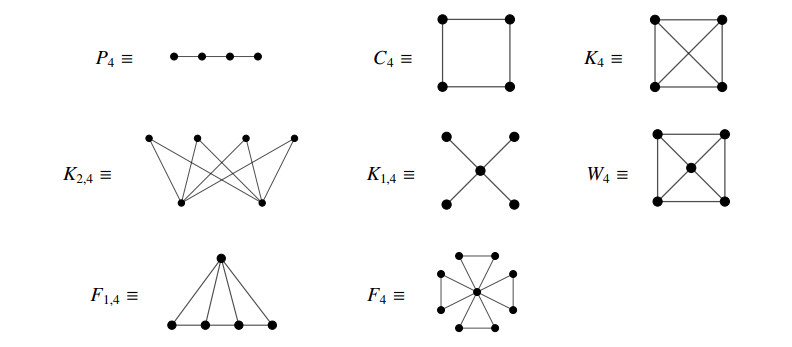
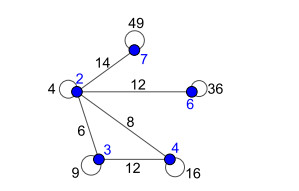
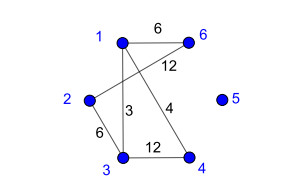
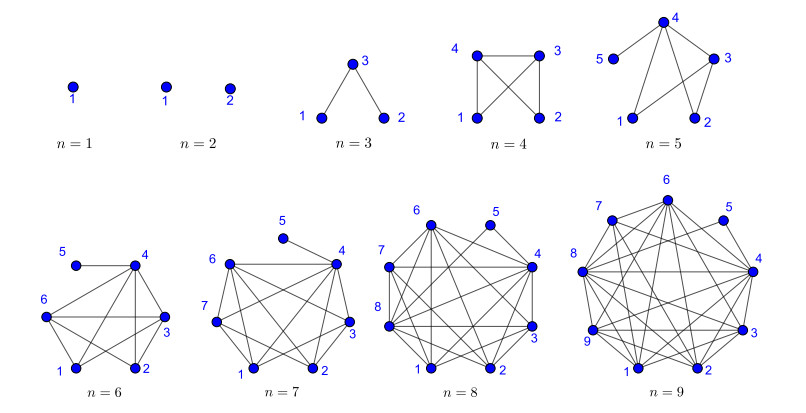
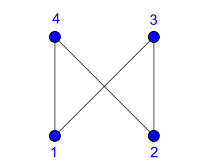

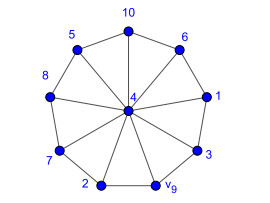
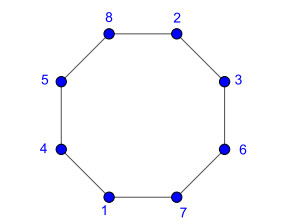




 DownLoad:
DownLoad: